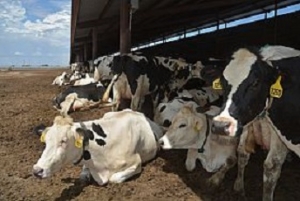Dairy in the World
Dairy” Farms are Going Away

As a result, “dairy” farms are becoming a thing of the past, according to Marin Bozic, Assistant Professor in Dairy Foods Marketing Economics at the University of Minnesota. He shared his thoughts on the future of the dairy industry with the audience of the recent 2022 Annual Conference of the Professional Dairy Producers of Wisconsin.
Bozic was not referring to the demise of the farm entities themselves. Rather, he was pointing out a shift from traditional dairy farms, whose incomes were based almost exclusively on milk and meat, to enterprises with a multitude of revenue streams.
“We already are seeing elements of this conversion on some farms, and innovation will allow more to follow,” said Bozic. “It involves a mindset shift, from the idea that a farm exists primarily to produce commodity milk, to that of a farm that happens to produce milk, along with many other concurrent products.”
Examples of those products include:
-
Value-added or “multi-attribute” milk (Example: A2 milk)
-
Beef animals
-
Carbon credits
-
Fertilizer
-
Renewable Natural Gas (RNG)
-
Electricity
-
Embryos
-
Agri-tourism
While not every farm will embrace all of these endeavors, Bozic advised producers to be very open-minded and willing to change going forward.
“Pursue innovations before others, and be mindful of environmental and social concerns,” he advised. “Position your business to benefit from shocks by diversifying revenue sources within an enterprise system.”
In addition to the products generated from their farms, future managers also will need to be nimble with marketing decisions and responses. “Lower fluid milk demand and higher-quality milk going into manufacturing could cause some processors to pull out of the federal order system,” Bozic predicted. “New ways of price discovery are coming.”
Amidst the shifting sands of U.S. milk marketing, Bozic said trust between the producer and processor is eroding. As a result, a new “social contract” is needed that balances increased responsibilities of dairy farmers regarding sustainability and farming practices with more commitments to a fair relationship by dairy processors.
He also said the industry is becoming more global in nature. “Fifty to 60 percent of the additional milk produced in the United States in the next 30 years will need to be exported,” he declared. “We already are exporting more than 20 percent of the milk solids we produce today.”
Bozic emphasized the importance of strategic planning and intentional devotion of time for envisioning what the future will look like for every farm. That may require some soul-searching, third-party counsel, and generational discussions about what the business will become -- which could be a significant departure from where it started.
“We need to think of our farms as more than a ‘livestock business,’” he advised. “Choose your identity deliberately, not just because you’re carrying on the traditions of your ancestors. And don’t define yourself too narrowly.”





















